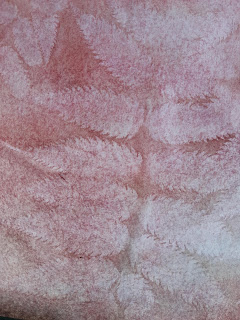Delighted to announce I will be taking part in a week-long artist residency at the end of July through the Dumoine River Art for Wilderness Retreat, sponsored by the Canadian Parks and Wilderness Ottawa Valley Chapter. The retreat includes 15 or so artists using a variety of mediums from felting to photography to painting to storytelling. We will be creating art en plein air, inspired by the rugged beauty of the area.
The goals of the retreat are to:
- learn more about conservation, to be inspired by the richness of the area
- create art that supports CPAWS-OV's conservation work, and
- raise awareness of the important of parks and protected areas in halting and reversing climate change and biodiversity loss.
My personal goals at this residency are to:
- create small fibre art pieces to document parts of the landscape: the lines in nature, decay, tree bark, lichen, rocks, and more
- I also plan to do some sketching and take oodles of reference photos to continue this goal later on, plus record my impressions about the land, colours, textures and other thoughts, and
- experiment with sun printing on fabric and paper. We won't have electricity at this retreat, so steaming my fabric to eco print won't be an option. Instead I'll use the power of the sun.
In preparation for sun printing at the retreat, I googled this topic looking for information such as which paints and materials work best, since I can bring only a limited amount of supplies. I found only a handful of blogs where the writers have experimented beyond the basics. Cotton fabric was highly recommended, and 2 types of paints: Pebeo setacolor for light fabrics (a transparent paint) and Liquitex soft body acrylics. Some also recommended using mordants such as alum or rust.
Here is what I have tried so far as I began experimenting prior to the retreat start:
- White cotton and cotton rag paper: I treated both with alum in advance, then painted with Setacolor paints. The fern leaves have good contact with the paper and fabric, helping to ensure sharper edges in the final print. I left these to dry for about 2 hours.
- Next I tried a scrap from an old yellow cotton sheet, putting it into a rust mordant first, then painting it with the Liquitex soft body acrylics. I am very very pleased with the result:
- Old linen, treated first in a rust mordant, turned out beautifully using red and orange Liquitex paints:
- Rice paper, painted with the Liquitex soft body paints. I had no idea how this would turn out. It's subtle, yet soft looking, and I think has wonderful potential as a background or perhaps with some stitching added:
- Yupo paper was next on my list to try, and is my favourite so far. Yupo is a synthetic paper, very smooth, and often painted with alcohol inks. For this experiment, I tried Setacolor paint, with surprisingly pleasing results. I love that the veins of the leaf show up, and that the print left a solid line around the leaves. I will definitely experiment with more on this paper and already have a project idea in mind:
- These next two are on watercolour paper using Setacolor paints, also with interesting effects. I'll be trying this again to see if I get similar results:










